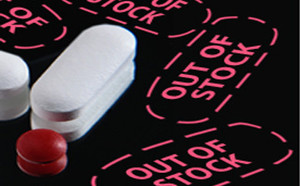Generic medicines currently have no responsibility for adding warnings about adverse effects of their medicines. Despite the US Supreme Court ruling that it was ‘impossible’ to force generics manufacturers to update their labels with the latest warnings, many feel that they have an ethical responsibility to do just that [1].
Although black-box safety warnings are routinely added to drug labels after approval [2], they have occasionally been based on adverse effects data that come to light only after there is generics competition, as was the case with metoclopramide, see Table 1. In many cases, such safety information did not emerge because of vigilance by the manufacturer or FDA, but owing to evolving litigation, publicly funded research or studies of competing products.
Table 1: Drugs with black-box warnings added after generics entry
| Drug
|
Approved (year)
|
Warning content
|
Warning added (year)
|
Reason
|
| Promethazine*
|
1956
|
Severe tissue injury, gangrene
|
2009
|
Litigation
|
| Indomethacin
|
1965
|
Death from cardiovascular causes
|
2005
|
Results from randomized trials of cyclooxygenase-2 inhibitors
|
| Haloperidol
|
1967
|
Increased mortality among elderly patients with dementia-related psychosis
|
2008
|
Canadian and US government-sponsored observational studies
|
| Droperidol
|
1970
|
QT-segment prolongation, torsades de pointes (a specific, rare variety of ventricular tachycardia)
|
2001
|
Accumulated spontaneous reports
|
| Disopyramide
|
1977
|
Increased mortality with class IC anti-arrhythmics
|
1996
|
Results from NIH-funded trial of other anti-arrhythmics
|
| Metoclopramide
|
1980
|
Tardive dyskinesia (a difficult-to-treat form of dyskinesia, a disorder resulting in involuntary, repetitive body movements)
|
2009
|
Litigation
|
| Fluoxetine
|
1987
|
Suicidal thinking and behaviour in children and adolescents
|
2004
|
Litigation that revealed suppressed clinical-trial findings
|
| * Warning applies to injectable form only; NIH = National Institutes of Health.
|
And what if the originator stops marketing a drug? Even if production continues, the brand-name manufacturer usually sharply reduces the resources committed to that product, including support of ongoing safety assessments. Few generic drug firms routinely conduct rigorous post-marketing safety evaluations. Although some have grown into sophisticated multinational corporations, others are small, local firms by comparison. It is hard to see how they might cooperate equably in collecting, verifying and disseminating adverse effect reports.
A bipartisan group of lawmakers has introduced legislation seeking to make generics manufacturers responsible for updating their labels just as brand-name drug companies are. The legislation remains under consideration in both Congress and the Senate.
No-fault compensation
Alternatively, a system like that for vaccine-related injuries is proposed. A no-fault system operates in which injured parties receive compensation from a fund created by levying a small fee on each dose of vaccine administered. In the case of generic drugs, patients could qualify for similar compensation by demonstrating that they had been harmed by a generic drug side effect that was not properly addressed in the product information. Generics manufacturers that join the programme would only bear additional liability if their labels do not match a consensus version [3].
Collection of adverse reaction data and additional research, if necessary, could be managed by FDA or another government body with appropriate expertise. FDA would be responsible for overseeing the integration of new findings into a centrally-written consensus label. With generic drugs now accounting for more than 75% of US prescriptions, imposing a minimal fee on each prescription would provide the revenue for an important investment in pharmacovigilance.
Such a database would make it possible to pool adverse event reports. It would also be more sensible than the current approach, in which so much research on the risks posed by approved drugs is funded by the manufacturers – a situation that can lead to problems with the collection, analysis, and reporting of safety data [4]. Finally, this alternative approach would be in keeping with a stronger, better-managed role for FDA in monitoring drug side effects.
Editor’s comment
Please feel free to share your thoughts via email or in the comments section below. What are your views on this issue? Would an approach like that used for vaccines work for generics?
Related article
The ethics of generic drug liability
References
1. Kesselheim AS, Avorn J, Greene JA. Risk, responsibility and generic drugs. N Engl J Med. 2012; 367(18):1679-81.
2. Lasser KE, Allen PD, Woolhandler SJ, et al. Timing of new black box warnings and withdrawals for prescription medications. JAMA. 2002;287:2215-20.
3. Duke J, Friedlin J, Li X. Consistency in the safety labeling of bioequivalent medications. Pharmacoepidemiol Drug Saf. 2012 Oct 8. doi: 10.1002/pds.3351. [Epub ahead of print].
4. Madigan D, Sigelman DW, Mayer JW, et al. Under-reporting of cardiovascular events in the rofecoxib Alzheimer disease studies. Am Heart J. 2012;164:186-93.
Permission granted to reproduce for personal and educational use only. All other reproduction, copy or reprinting of all or part of any ‘Content’ found on this website is strictly prohibited without the prior consent of the publisher. Contact the publisher to obtain permission before redistributing.








 0
0











Post your comment